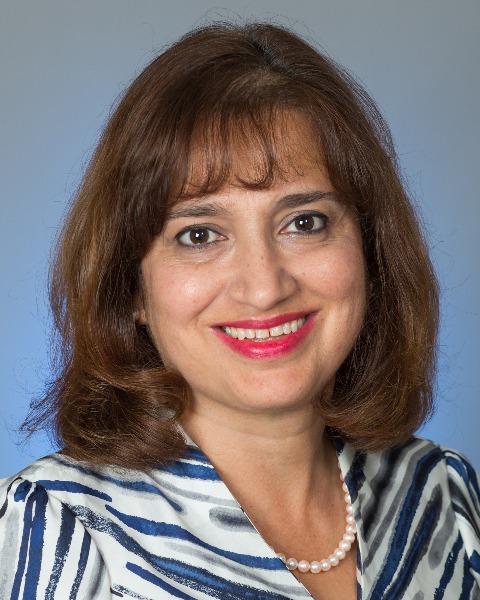Presentation Type: Virtual Poster
Program: Section on Minority Health, Equity, and Inclusion Program (H3805)
P0662 - A Novel Pipeline Program: A Path towards Diversity and Eliminating Health Disparities
Background: To advance research efforts that identify sources of health disparities, pipeline programs are needed to garner the interest of a diversified workforce in healthcare and research. Despite efforts to increase diversity in healthcare and research fields, the proportion of underrepresented in medicine (URM) and women remains alarmingly low. The purpose of this study is to evaluate the effectiveness of a pipeline healthcare research program.
Methods: The Health and Science Enrichment Programs (HSEP) and the Center for Future Health Professionals (CFHP) at UC Irvine School of Medicine are two pipeline programs that are designed to garner the interest of high school and college students towards health care professions. As part of these programs, research is emphasized, and college students or medical student coaches mentor a group of high school students on variety of research projects. Some of the Research Program coaches had participated in either HSEP or CFHP as a high school student or a college student in previous years and returned to serve as a research coach. The findings of each of the research projects were submitted by the coaches to national meetings.
Results: A total of 61 coaches submitted 70 abstracts between 2009 and 2019. All of the 70 abstracts were accepted to national meetings and were presented by the college or medical student coach who was the first author. Majority of research topics were in the field of pediatrics. Between 2009 and 2019, the number of abstracts submitted and accepted increased from one in 2009 to 13 in 2019. Of the 61 coaches, 38 (62%) were female, and 21 (33%) belonged to an URM group. Of 61 coaches, 36 (59%) had participated in one of the 2 pipeline programs, and returned to be a research coach at a subsequent year. Of 36 who returned to serve as a research coach, 28 (78%) had been at the high school level at initial enrollment.
Of the 20 URM coaches, 40% are now enrolled in college, 35% are attending medical school or residency programs, and the other 25% are either in a health-related career or have completed professional school in other health fields. Of the 12 URM females, 50% are now in medical school or residency. There was no significant difference between non-URM and URM coaches’ status in regards to entering a health-care profession.
Conclusion: A vast majority of both URM and non-URM research coaches are now attending or have completed a health-related professional school or are working in a healthcare field. More than half of the coaches had participated in our programs as a high school or college student. Our pipeline programs have been successful in garnering the interest URM and non-URM students in healthcare at a young age.
Methods: The Health and Science Enrichment Programs (HSEP) and the Center for Future Health Professionals (CFHP) at UC Irvine School of Medicine are two pipeline programs that are designed to garner the interest of high school and college students towards health care professions. As part of these programs, research is emphasized, and college students or medical student coaches mentor a group of high school students on variety of research projects. Some of the Research Program coaches had participated in either HSEP or CFHP as a high school student or a college student in previous years and returned to serve as a research coach. The findings of each of the research projects were submitted by the coaches to national meetings.
Results: A total of 61 coaches submitted 70 abstracts between 2009 and 2019. All of the 70 abstracts were accepted to national meetings and were presented by the college or medical student coach who was the first author. Majority of research topics were in the field of pediatrics. Between 2009 and 2019, the number of abstracts submitted and accepted increased from one in 2009 to 13 in 2019. Of the 61 coaches, 38 (62%) were female, and 21 (33%) belonged to an URM group. Of 61 coaches, 36 (59%) had participated in one of the 2 pipeline programs, and returned to be a research coach at a subsequent year. Of 36 who returned to serve as a research coach, 28 (78%) had been at the high school level at initial enrollment.
Of the 20 URM coaches, 40% are now enrolled in college, 35% are attending medical school or residency programs, and the other 25% are either in a health-related career or have completed professional school in other health fields. Of the 12 URM females, 50% are now in medical school or residency. There was no significant difference between non-URM and URM coaches’ status in regards to entering a health-care profession.
Conclusion: A vast majority of both URM and non-URM research coaches are now attending or have completed a health-related professional school or are working in a healthcare field. More than half of the coaches had participated in our programs as a high school or college student. Our pipeline programs have been successful in garnering the interest URM and non-URM students in healthcare at a young age.

Behnoosh Afghani
Clinical Professor
UC Irvine School of Medicine
Orange, CaliforniaDisclosure: No Financial Relationships Disclosed
